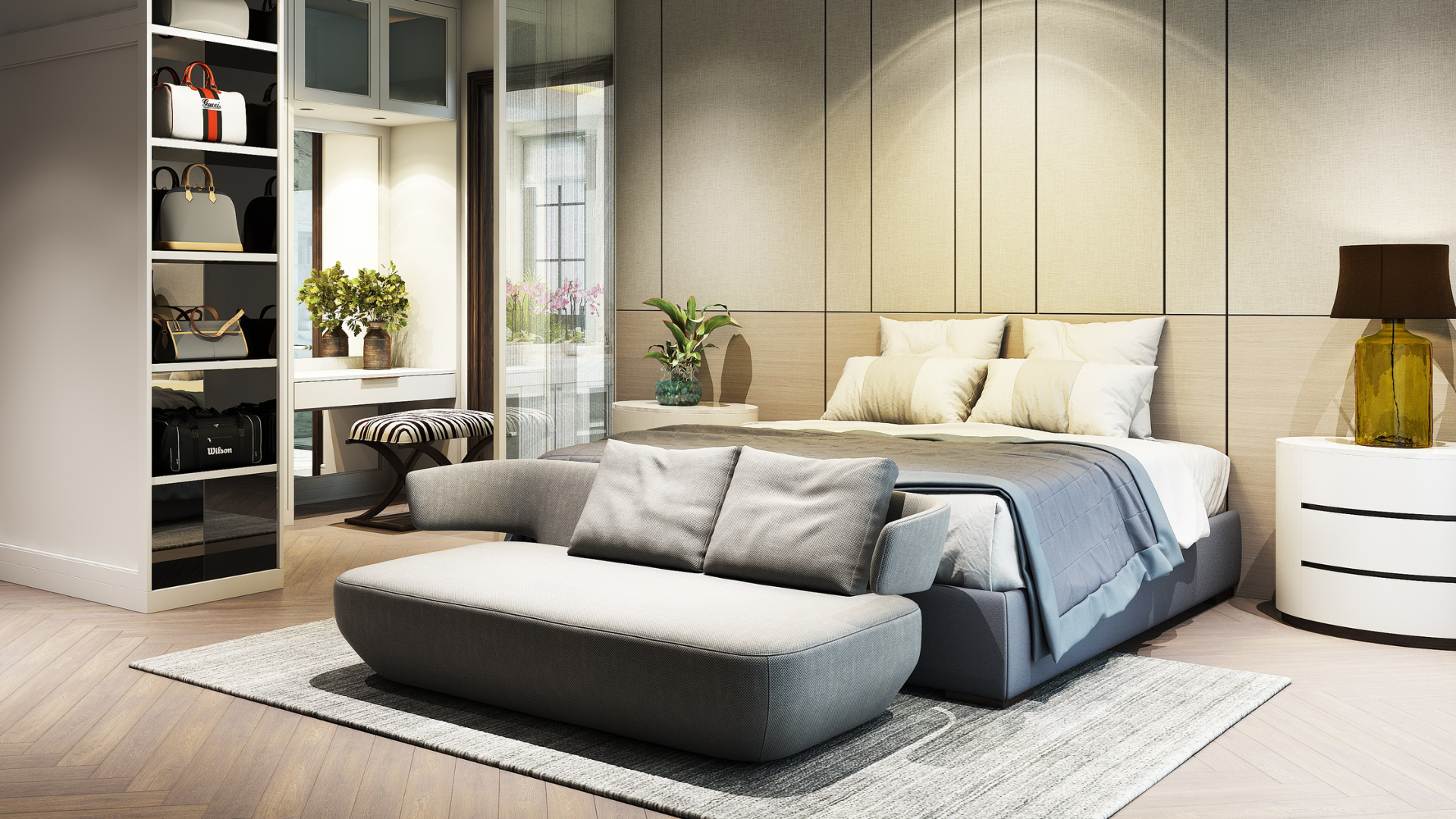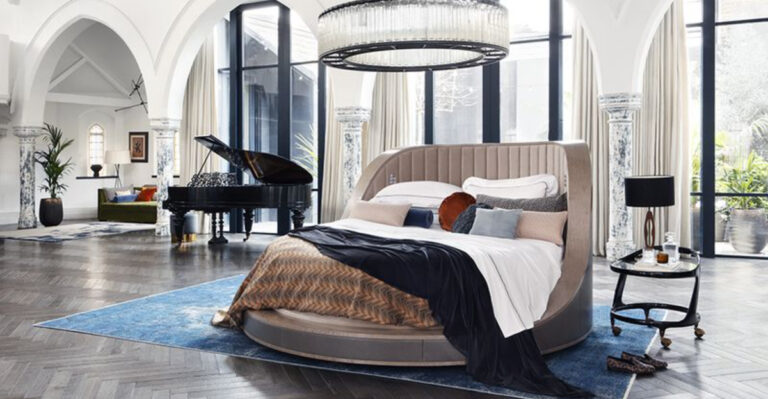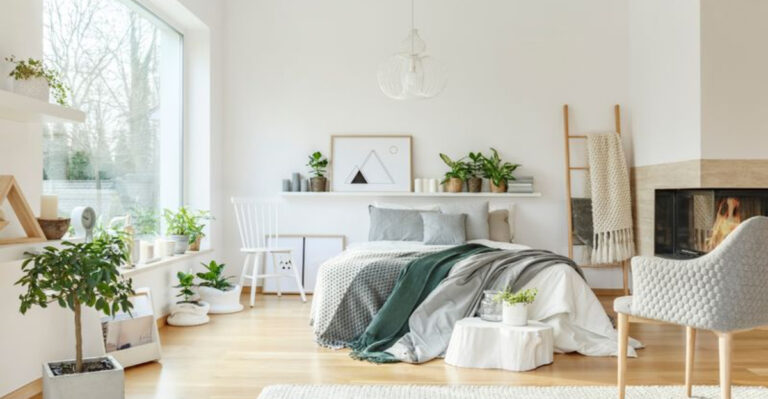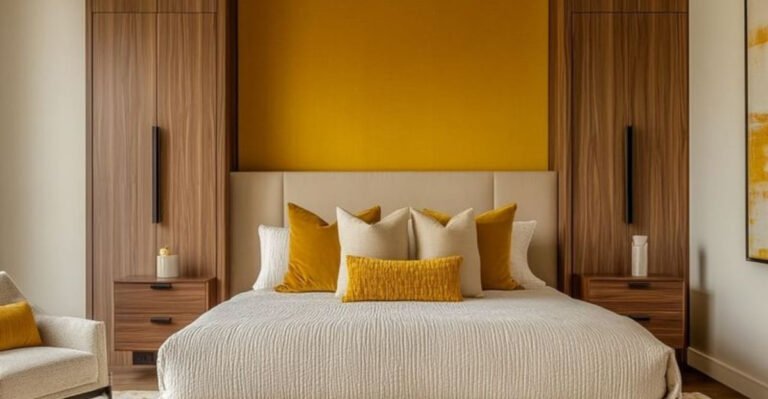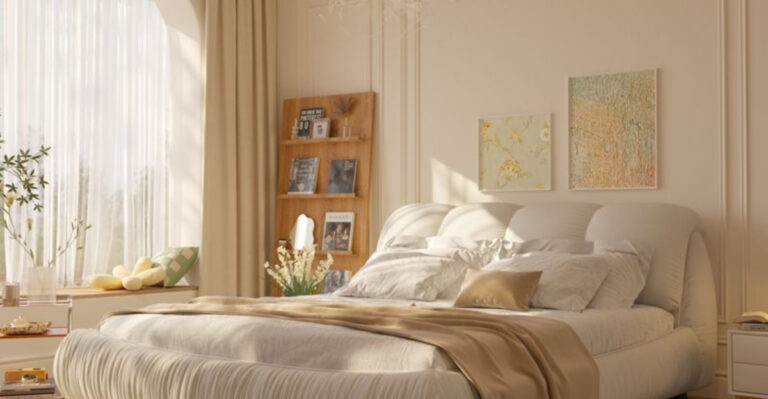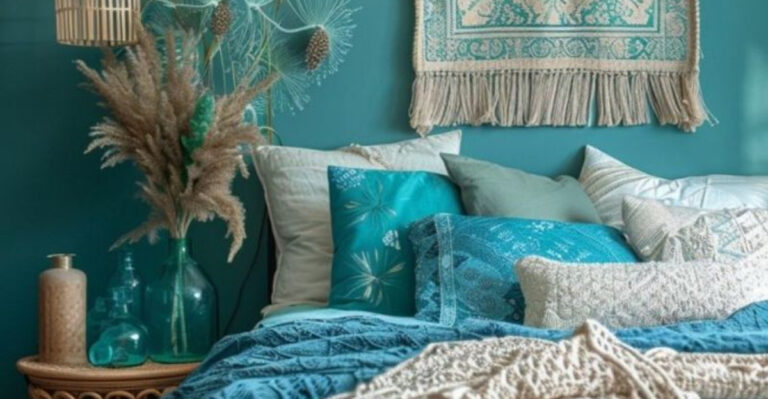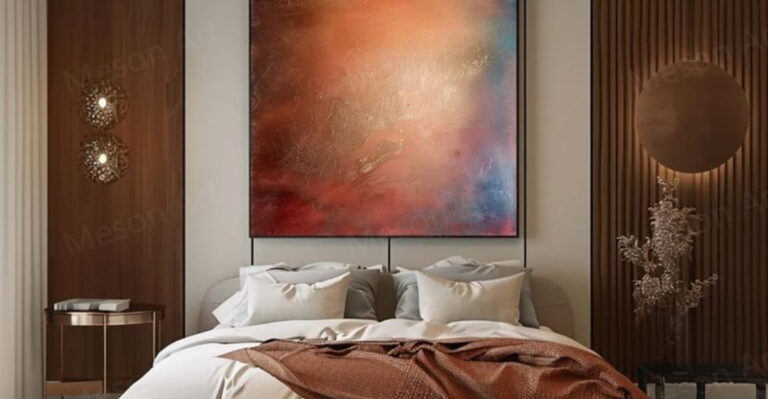Decorating A Bedroom Step By Step From Start To Finish, According To Interior Designers
Turning your bedroom into a comfortable, personal space doesn’t have to be overwhelming. With a little advice from interior designers and a bit of thought about what actually works for you, it’s totally doable.
Whether you’re starting from scratch or just trying to make your current setup feel a bit more like home, there are some helpful steps that can make the whole process smoother.
I’ve found that avoiding a few common mistakes, like overdoing it with trends or skipping storage, can really make a difference. In the end, it’s all about creating a space that feels like yours.
1. Assess Your Space And Needs

Grab a measuring tape and jot down the dimensions of your bedroom. This simple step prevents you from buying furniture that won’t fit through the door or takes up too much floor space.
Think about how you actually use the room. Are you someone who reads in bed? Do you need extra storage for a massive shoe collection? Your unique habits should guide your design decisions.
Sometimes the smallest details make the biggest difference in functionality, so don’t skip this foundation step.
2. Create A Mood Board
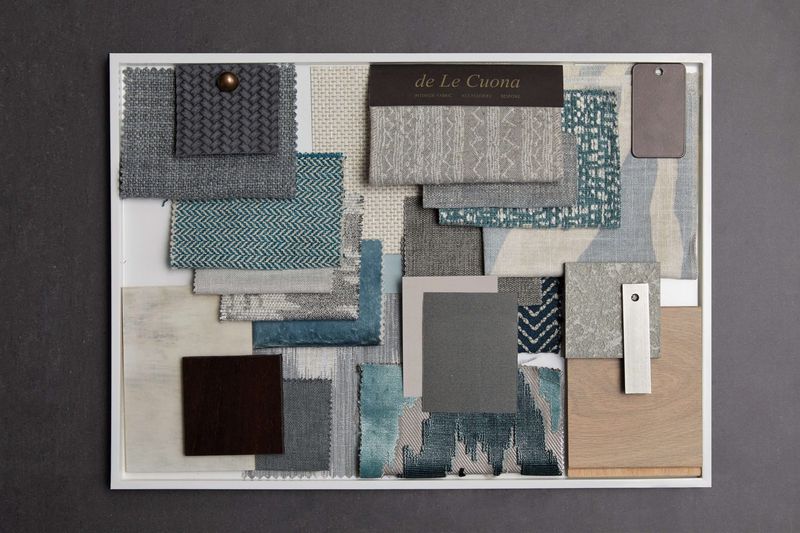
Mood boards aren’t just for professional designers. They’re your visual roadmap that prevents expensive mistakes and helps communicate your vision to others who might be helping with the project.
If traditional cutting and pasting isn’t your thing, apps like Pinterest or Instagram can be digital alternatives. Save images that speak to you without overthinking why you like them.
There’s something magical about seeing all your ideas in one place, as patterns in your taste become obvious even to untrained eyes.
3. Pick A Color Scheme
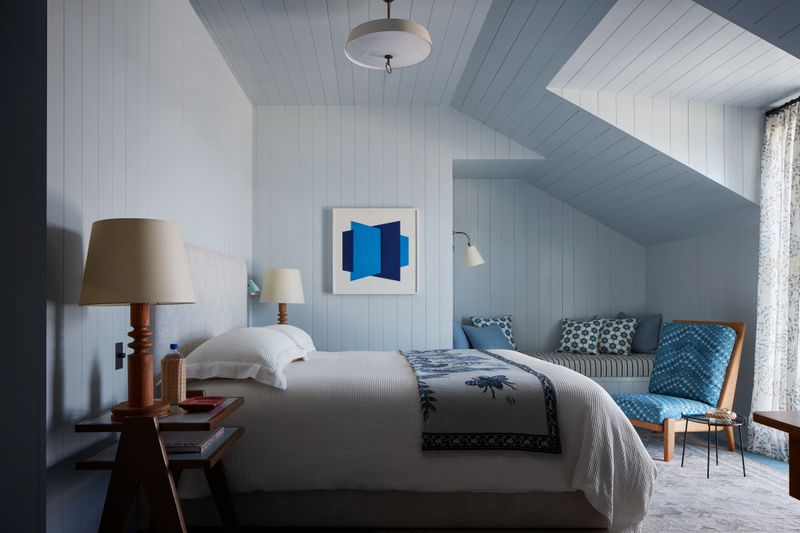
Colors affect our mood more than we realize. Blues and greens promote calmness, while yellows can energize a space. Consider what feeling you want when you wake up each morning.
The 60-30-10 rule works wonders for beginners: 60% of the room in your dominant color, 30% in a secondary color, and 10% in an accent color. This prevents the room from feeling chaotic or overwhelming.
Looking at your wardrobe can offer clues about colors you naturally gravitate toward and will enjoy living with long-term.
4. Plan Your Layout
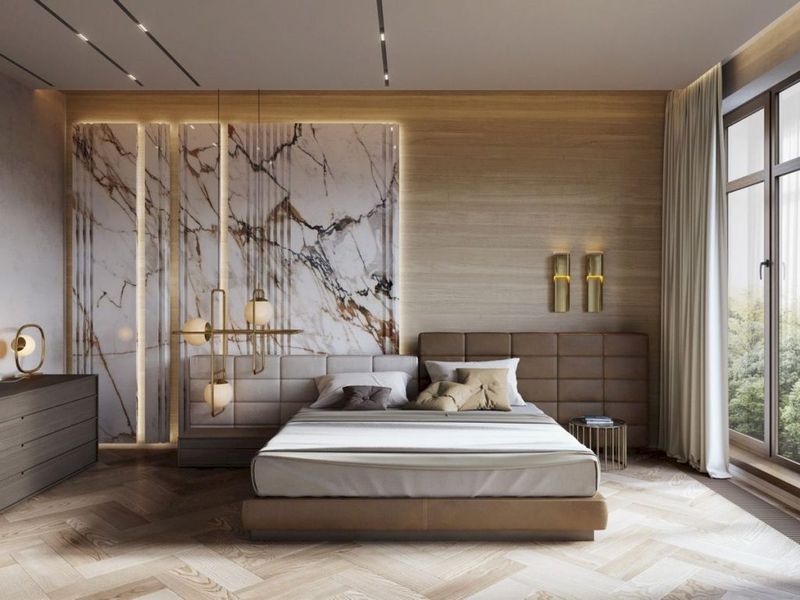
Feng shui principles suggest placing your bed where you can see the door but aren’t directly in line with it. This subconsciously creates a feeling of safety while you sleep.
Traffic flow matters tremendously in bedrooms. You need at least 2-3 feet of walking space around major furniture pieces to avoid the daily frustration of squeezing past obstacles.
Try sketching different arrangements on paper before moving heavy furniture. A little planning saves hours of unnecessary heavy lifting and potential wall scuffs.
5. Select The Right Bed
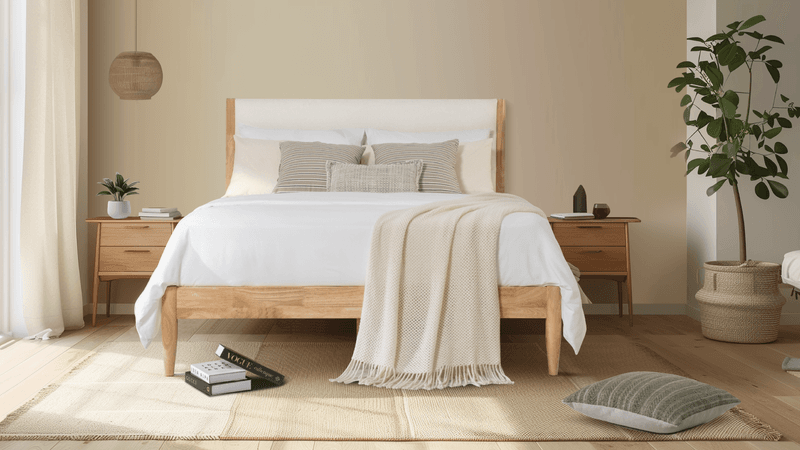
Your mattress and bed frame are the stars of the show, not just functionally but visually. They typically occupy about 60% of the visual weight in a bedroom.
Headboards make a statement while providing practical back support for reading or scrolling through your phone. Upholstered options add softness, while wooden or metal frames bring structure.
Though platform beds look cool in magazines, consider your knees before committing to very low beds if you’re over 40 or have mobility issues.
6. Choose Functional Nightstands
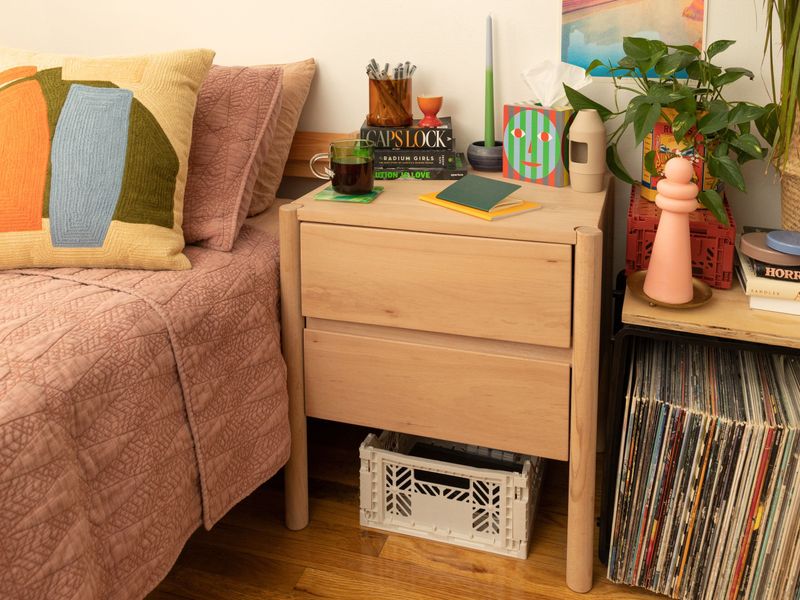
Nightstands should be roughly the same height as your mattress top for easy reach. This ergonomic detail prevents awkward stretching when grabbing your phone or water glass.
Storage needs vary wildly from person to person. Book lovers might prefer shelves, while minimalists might need just one small drawer for essentials.
Mismatched nightstands can actually look more interesting than a matching pair. Just keep them at similar heights and with some connecting element like color or style to avoid a haphazard look.
7. Incorporate Proper Lighting
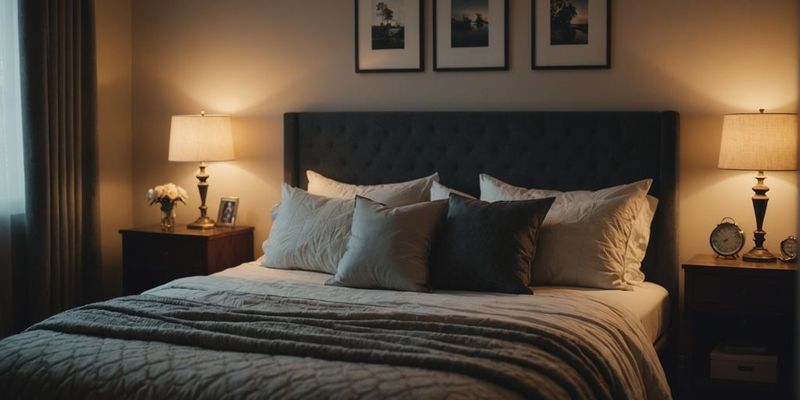
Layered lighting transforms bedroom functionality. You need ambient lighting for overall illumination, task lighting for reading, and accent lighting to highlight architectural features or artwork.
Wall sconces free up precious nightstand space and add a hotel-like luxury feel without major renovation if you choose plug-in versions. They’re a game-changer for small bedrooms.
Warm-toned bulbs (2700-3000K) create a relaxing atmosphere that signals to your brain it’s time to wind down, unlike cool blue light that disrupts sleep patterns.
8. Select Window Treatments
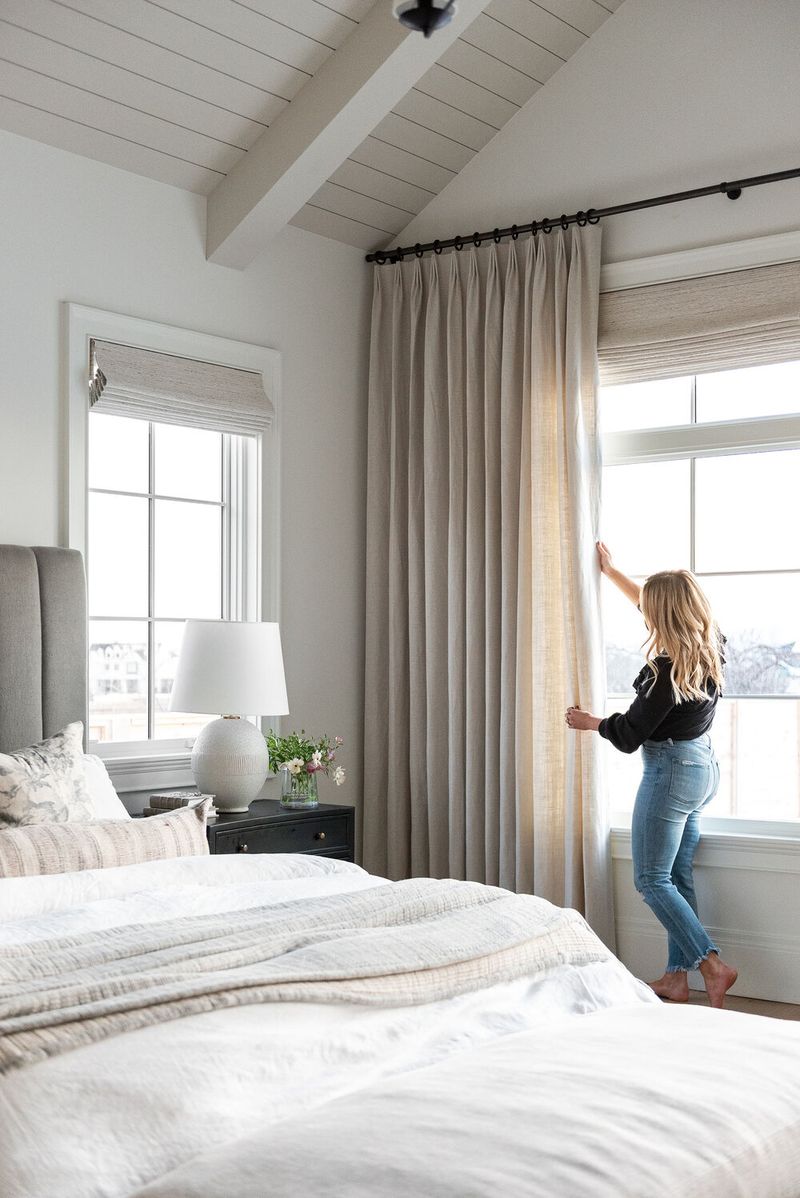
Light control ranks as the top priority for bedroom windows. Blackout options help shift workers or sensitive sleepers, while sheer layers add privacy without blocking natural light during the day.
Hanging curtains higher and wider than your actual window creates an illusion of larger windows and higher ceilings. This designer trick works in any size room.
Motorized blinds seem like a luxury until you experience the joy of closing them from bed on weekend mornings without getting up. Some smart options can even be programmed to open gradually as your alarm goes off.
9. Add Area Rugs
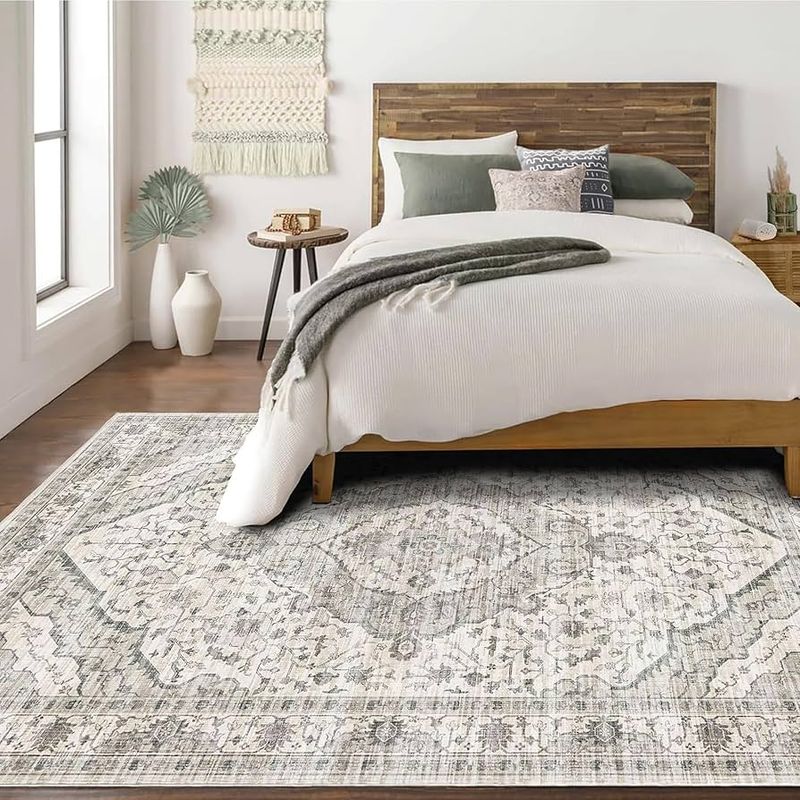
Nothing feels worse than stepping onto a cold floor first thing in the morning. Area rugs solve this problem while adding color, texture, and sound absorption to your bedroom.
Size matters tremendously with bedroom rugs. They should extend at least 18-24 inches beyond the sides of the bed to properly anchor the space and feel generous underfoot where you actually walk.
Washable rugs have revolutionized bedroom design for allergy sufferers and pet owners. Many modern options can go straight into home washing machines, making them practical for high-use areas.
10. Organize Storage Solutions
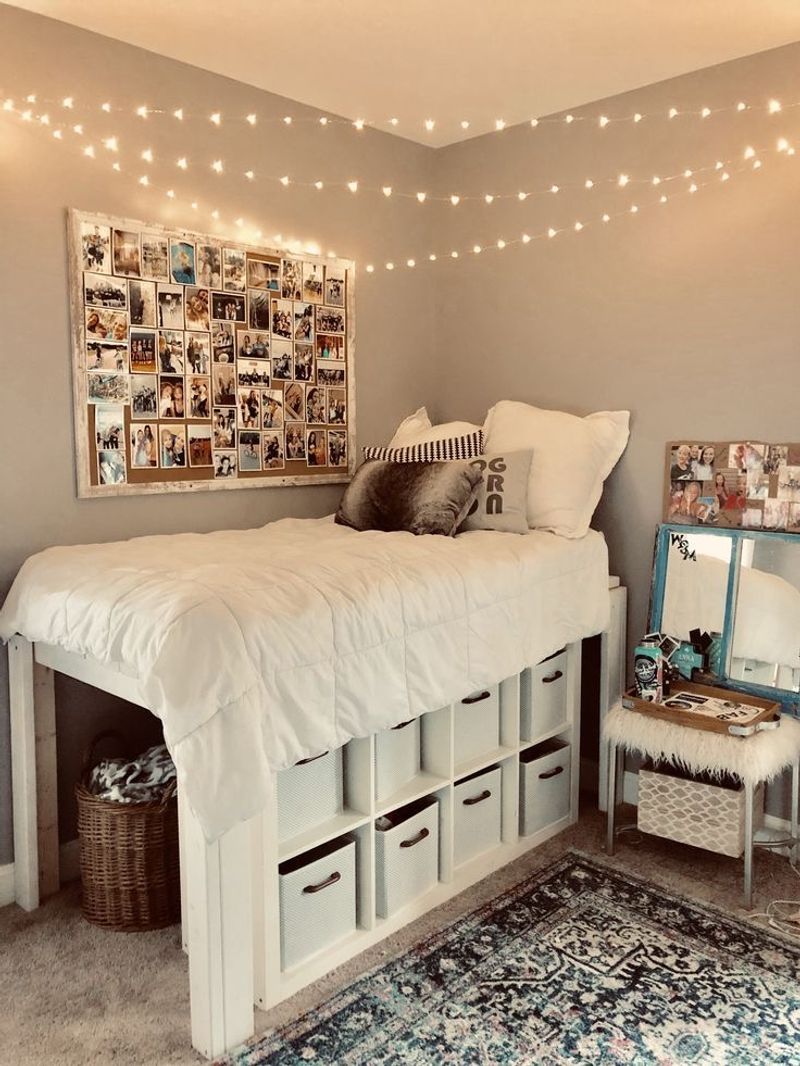
Under-bed storage containers on wheels make accessing seasonal items painless. They utilize otherwise wasted space without making your bedroom feel cluttered.
Floating shelves work wonders in small bedrooms by moving storage up the walls rather than consuming precious floor space. They create display opportunities while remaining functional.
Hooks often get overlooked in bedroom planning but can transform your daily routine. Strategic placement near dressing areas for tomorrow’s outfit or robes near the bathroom door streamlines morning chaos.
11. Select The Right Dresser
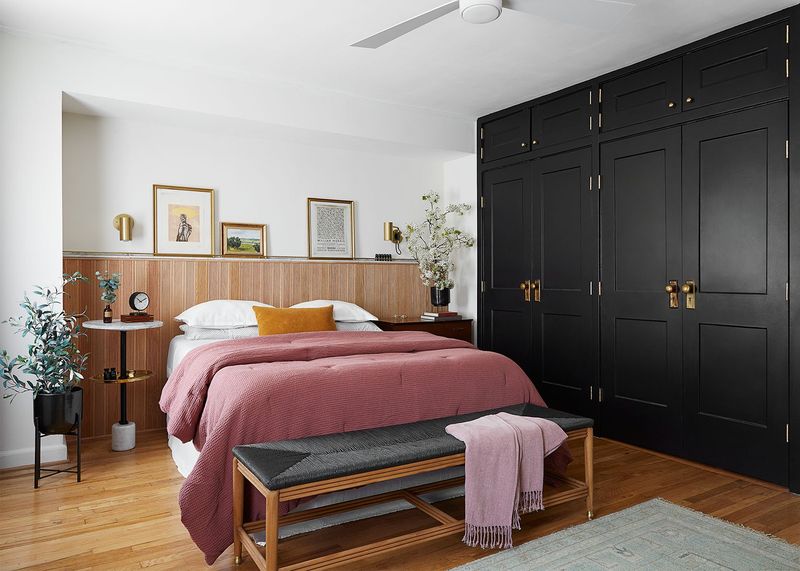
Taller dressers work better for folded clothes like sweaters and jeans, while longer, shorter dressers with their larger surface areas make excellent display spots for decorative items. Match your dresser style to your actual clothing needs.
Soft-close drawers aren’t just a luxury. They prevent slamming that can wake sleeping partners and extend furniture life by reducing daily wear and tear.
Where you position your dresser affects how the room flows. Avoid placing it where drawer extension would block pathways or doors, causing daily frustration.
12. Add Personal Touches
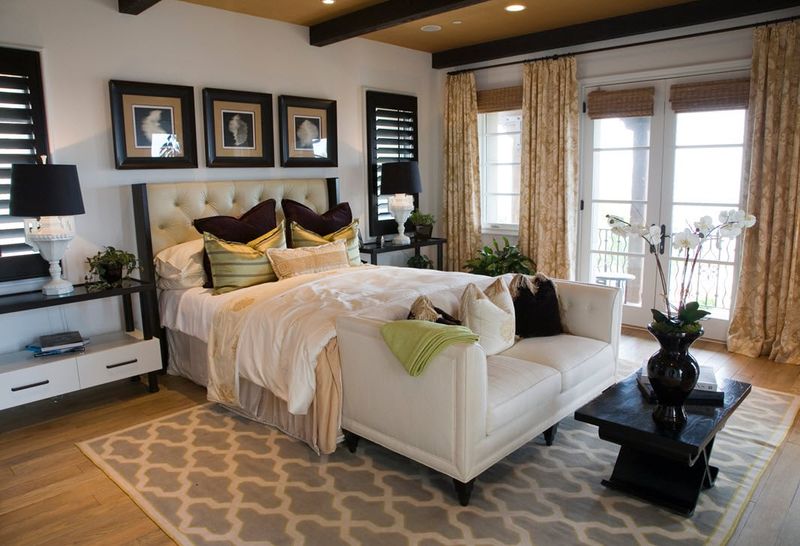
Family photos take on a more sophisticated look when printed in black and white and displayed in similar frames. This creates cohesion while still showcasing your loved ones.
Art choices reveal your personality faster than any other decorative element. Select pieces that make you smile rather than just matching your color scheme.
Meaningful objects tell your story without words. That rock from a special beach trip or an heirloom from grandma creates layers of meaning that generic decor simply cannot achieve.
13. Incorporate Plants And Natural Elements
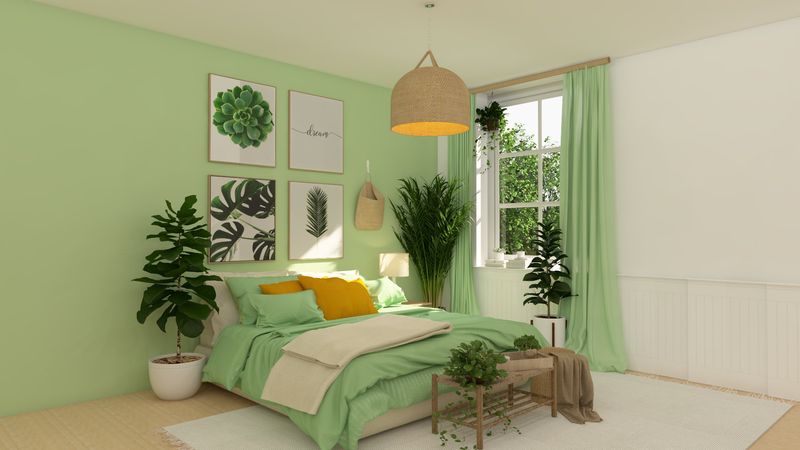
Low-light tolerant plants like snake plants and pothos survive even in bedrooms with minimal natural light. They clean the air while adding life to the space without demanding too much care.
Natural materials like wood, stone, and cotton textiles ground a bedroom and connect us to the outdoors. This connection has been shown to improve sleep quality and reduce stress.
If you kill every plant you touch, high-quality silk plants have come a long way and can still bring that organic shape and movement to your space without the maintenance requirements.
14. Layer Textiles And Textures
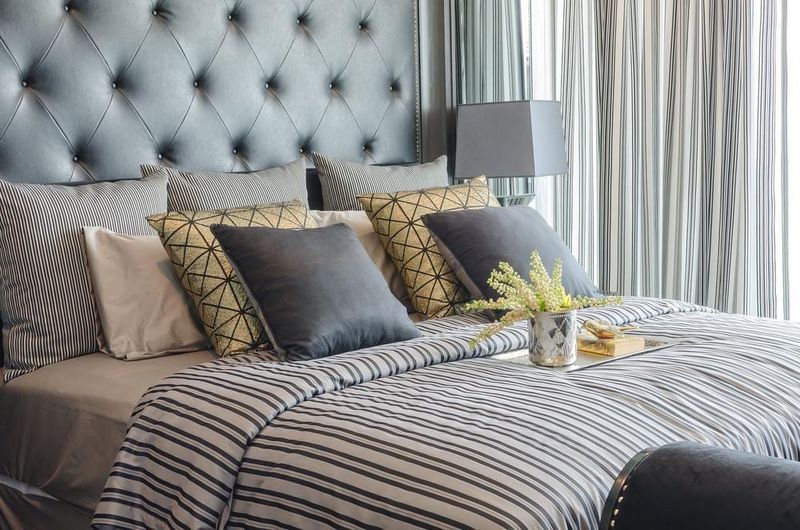
Bedding layers create that magazine-worthy look while serving practical temperature regulation through changing seasons. Start with quality sheets, add a light quilt, then top with a duvet or comforter.
Mixing textures prevents a flat, boring look even when using a monochromatic color scheme. Combine knits, linens, velvets, and cottons for visual interest that begs to be touched.
Throw pillows get a bad rap from partners who toss them on the floor, but they transform a bed from basic to boutique hotel with minimal effort and cost.
15. Finish With Proper Placement
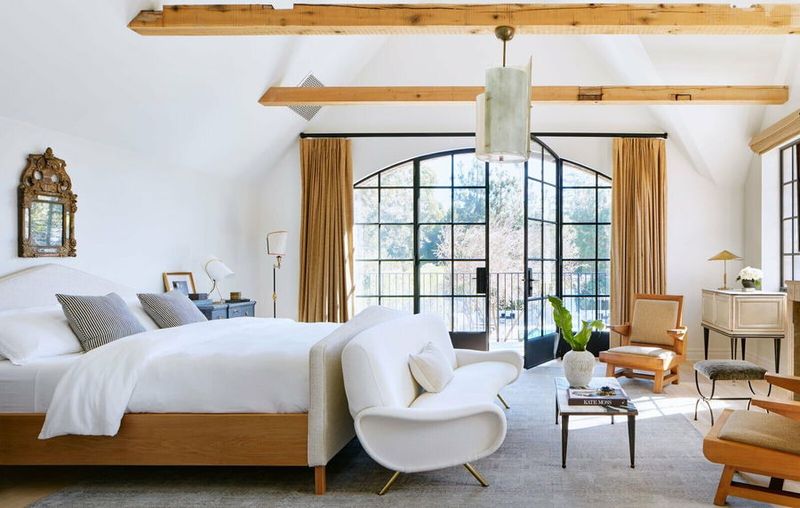
Mirrors should reflect something beautiful rather than facing directly toward the bed. This subtle placement trick enhances views and light while avoiding the slightly unsettling feeling of seeing yourself while half-asleep.
Furniture arrangement should follow the room’s architecture rather than fighting against it. Work with ceiling slopes, windows, and built-ins as features rather than obstacles.
The spaces between items matter as much as the items themselves. That breathing room between furniture pieces creates a sense of calm that cluttered rooms lack.

